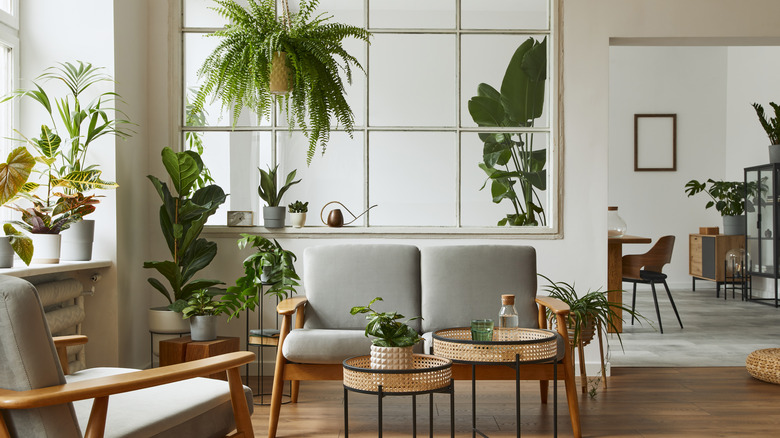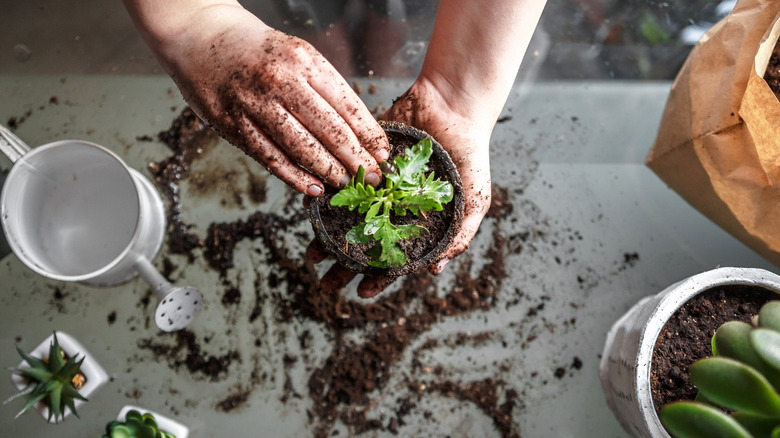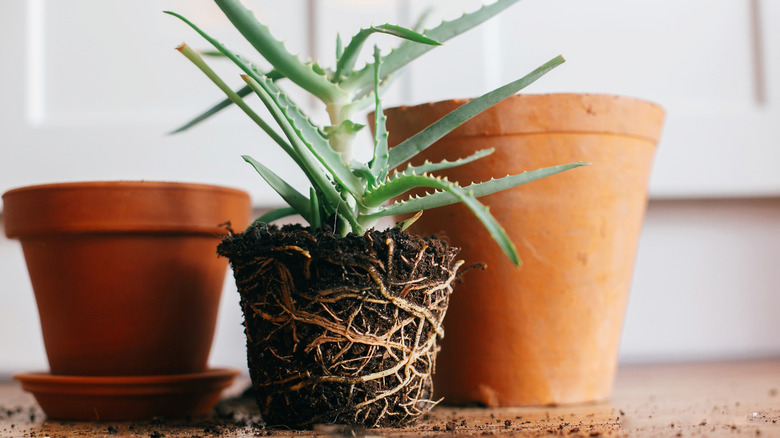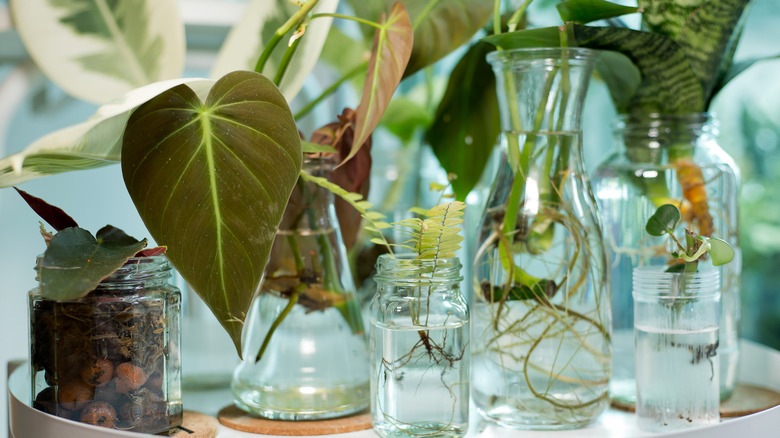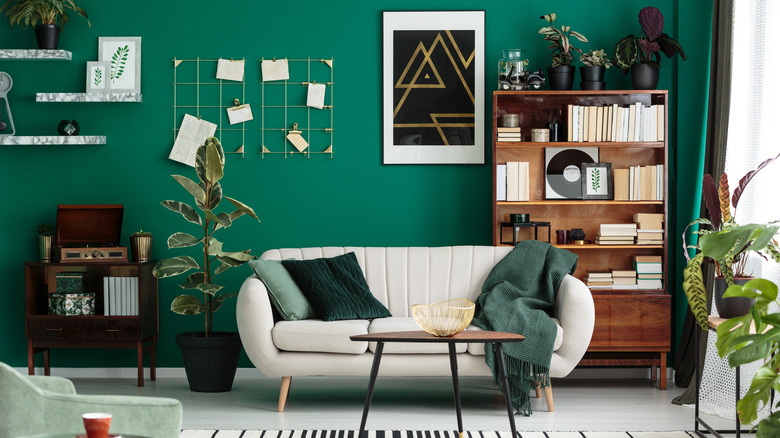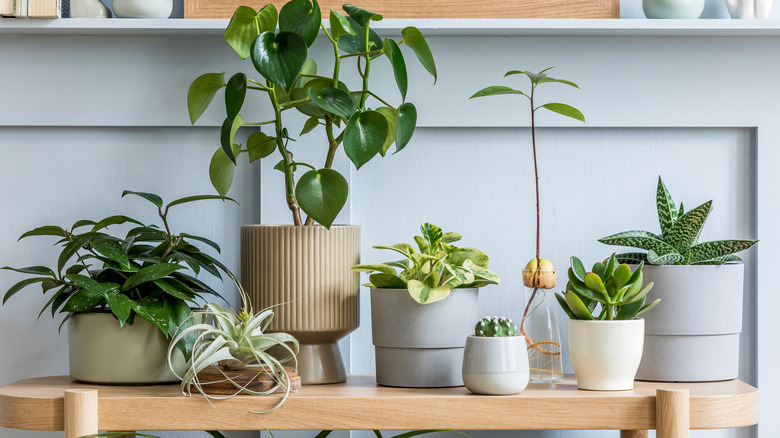Why You Want To Repot Most Of Your House Plants Once Every Year
We may receive a commission on purchases made from links.
Much like any other living thing we care for, such as children and pets, our plants have personalities of their own and require the same kind of love and attention to detail. And just as every other living thing does, our green babies outgrow their spaces and need an upgrade. If someone is stuck in the same clothes they wore a couple of years ago, despite their growth spurt, they wouldn't be too comfortable — plants are no exception. The Agriplastics Community has found that our plants experience many of the same things we do as humans, like thermal stress, a need for vitamin D, and the ability to inhabit functional processes.
Repotting your house plants is essential to their well-being and growth. Good Earth Plant Company Inc. notes that crowded roots in a tight space can lead to stunted growth and stressed plants that eventually begin to wilt and die. But an overcrowded pot is just one of many reasons you will want to repot most of your plants once every year.
Plants need new nutrients
When a plant is in the same pot for too long, it will absorb all of the soil's nutrients and struggle to get the healthy diet it needs. According to Crocker Nurseries, a plant's root system can grow to the point that it supplants the soil, and not even fertilizing the plant will increase its ability to absorb nutrients from the drained soil. Dry, nutritionless soil will also have difficulty retaining the water your plant needs. If you notice water going straight through your pot and out the drainage holes, this may be a sign that your soil is no longer adding nutritional value to the plant.
Even if you are not putting your plant in a different or bigger pot, replenishing its soil will significantly impact its health. Doing so will also allow a chance to include new soil additives, like bat guano and earthworm castings, that are incredibly beneficial to your greenery, via Simple Grow.
Avoid rootbinding
As a plant's root system continues to expand despite its pot being too small, its roots will eventually knot up and become root-bound, a term that the Merriam-Webster dictionary defines as thick, snarled masses that do not permit new growth. Rootbinding is a popular reason for repotting plants yearly.
Wild Interiors points out that it is more likely for overcrowded and root-bound plants to develop root rot and other diseases as they typically experience minimal to no airflow. Your plants need the space to spread their roots, wiggle their toes, and absorb all the excellent nutrients you've placed in their soil. However, Bioadvanced importantly notes that too much space can also have a negative impact on a plant. Potting a plant in a large pot to avoid the need to repot it later won't have any added benefits and will actually result in an increased chance of root rot.
Propagation
There are not many things quite as joyful as seeing your plant produce babies, and repotting them is a perfect time to propagate from a mama plant. But more than just being adorable, pruning plants has added health benefits. Stump says that plant pruning helps keep away pests, supports new growth from becoming small and infrequent, and is a simple way to maintain the desired look and shape.
Propagating plants can be done in water or soil; the best method usually depends on whether the cutting has already established its root system. Our House Plants suggests that cuttings propagated in water should have their water changed every few weeks and that if it is placed in soil, it will be essential not to overwater it and use fresh compost. Other propagation methods can include lightweight expanded clay aggregate, LECA, or sphagnum moss. No method of plant propagation is completely fail-proof, but researching the best practices for your individual plants will always give you better results.
Keep your plants in style
Plants have a powerful place in interior design, especially now as people want to add rich botanical and serene nature themes to their homes. From large potted trees to small succulents, plants add a variety of styles to a space, and it all starts with the pot.
Repotting most of your plants once a year allows switching up your design aesthetic and incorporate new accent pieces. Decorilla advises that your chosen pots should match your interior style while keeping the plant's health in mind. Make sure your pots are not only glamorous but also have essential qualities for your plants, such as drainage holes. Home accent swaps are an easy and efficient budget-friendly way to change up a room or completely re-do your vibe. As important as it is for your plants' well-being to be repotted once a year, an excuse to redecorate never hurts.
But don't repot too often
Circling back to the theme that plants carry the same characteristics as any other living thing, plants can experience trauma and shock. Indoor Gardening explains that plants can undergo extreme stress when their environment changes, and they need attentive care when moving into new pots or soil. Think of it in terms of getting a new goldfish — you are supposed to allow your fish to sit in its water bag, immersed in its fresh water for a few hours before completely releasing it into its new tank. This is because if you suddenly plop your new fish into water that it has not yet adapted to, it will go into shock.
Our green babies rely on many factors to grow, including light and temperature. Keeping consistency and transplanting your plant as minimal as possible will ensure your plant does not experience shock and begin to wilt. The Sill reports that most plants should not be repotted more than once between 12 and 18 months, with mature plants possibly needing to be repotted as little as once every two to three years.
